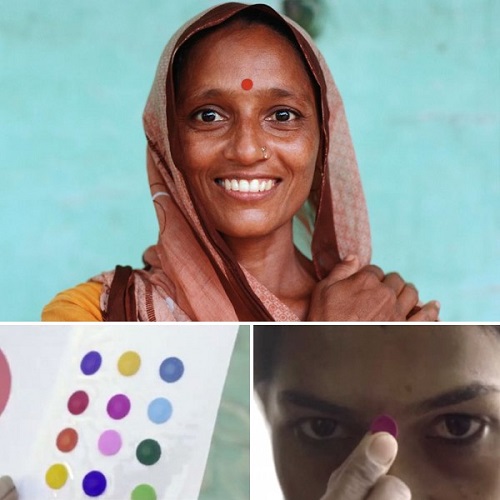An iodine patch, designed like a regular bindi, is expected to help one lakh tribal women in north-west Maharashtra battle iodine deficiency. Since these tribals don’t consume iodized salt, they are usually deficiency in this nutrient.
Last month, these iodine bindis were distributed free to tribal women in villages near Nashik and Ahmednagar. “Each woman got 30 bindis to last a month. When stuck on the forehead, it delivers the daily required amount of iodine — 100-150 micro grams — to the body by absorption through the skin,” says Dr Prachi Pawar, president Neelvasant Medical Foundation and Research Centre, a Nashik NGO that organized the distribution after identifying population pockets deficient in iodine.
Developed by Grey for Good, philanthropic arm of advertising and marketing agency Grey Group, the idea for the iodine bindi project — named Life Saving Dot-Jeevan Bindi — was conceived and incubated in Singapore. Creators at Grey were looking for a solution to address iodine deficiency in India when doctors told them that it can be absorbed through the skin. So they decided to make an iodine patch but to give it a wider appeal it was designed as bindi.
“Almost every Indian woman wears a bindi. Transforming these into iodine patches ensured that women got the required dosage of iodine without making changes to their daily behaviour,” says Gaurav Arora, account director, Grey.
The company partnered with Neelvasant Foundation for social implementation and distribution. “Earlier we used to give them iodine supplement pills but they were not in habit of taking them,” says Pawar adding that the Jeevan Bindi is a practical solution to this problem.
Iodine deficiency causes a host of disorders like goitre, impaired mental development and thyroid issues, which, in turn, have been linked to breast cancer and fibroids. According to data from National Iodine Deficiency Disorders Control Programme, more than 71 million Indians suffer from iodine deficiency disorders.
Iodine supplementation is targeted more at women of child-bearing age, says Dr Sandeep Budhiraja, director internal medicine at Max Hospital, Delhi. This is because during gestation, pregnancy and lactation women need twice the amount of iodine they usually require. “Children born to mothers deficient in this nutrient are low in IQ and also suffer from cretinism, a neurological condition,” adds Budhiraja.
The bindi needs to be worn every day for up to eight hours to be effective. “It can be worn at night and even by pregnant women,” says Pawar. While the NGO has yet to monitor the impact of the bindis on the iodine levels of the tribal women, Grey is now working on the second phase of this project wherein they plan to make these bindis available in the market. “We are in the midst of ironing out details for production and distribution,” says Arora.
Originally published in the Times of India


